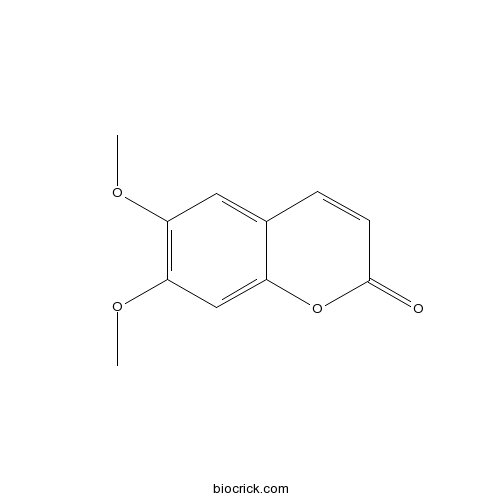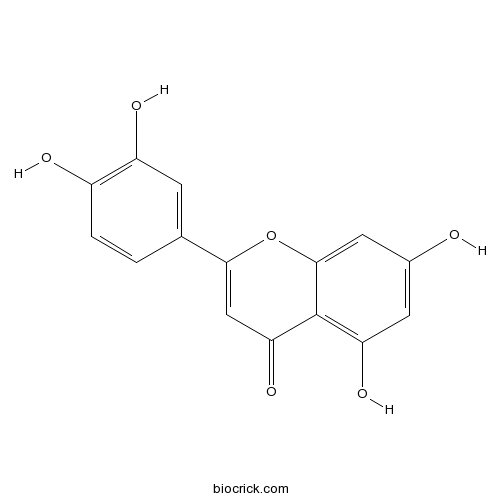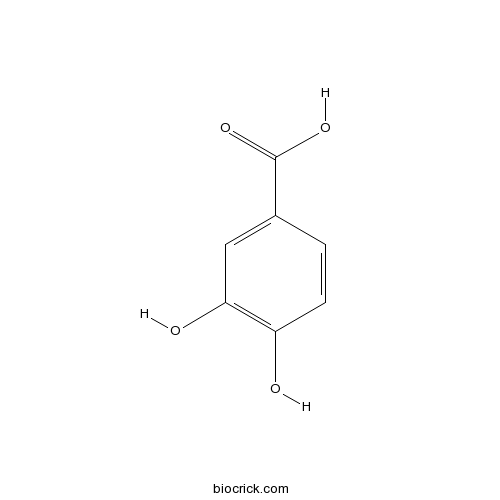Ranunculus japonicus
Ranunculus japonicus
1. The products in our compound library are selected from thousands of unique natural products; 2. It has the characteristics of diverse structure, diverse sources and wide coverage of activities; 3. Provide information on the activity of products from major journals, patents and research reports around the world, providing theoretical direction and research basis for further research and screening; 4. Free combination according to the type, source, target and disease of natural product; 5. The compound powder is placed in a covered tube and then discharged into a 10 x 10 cryostat; 6. Transport in ice pack or dry ice pack. Please store it at -20 °C as soon as possible after receiving the product, and use it as soon as possible after opening.
Natural products/compounds from Ranunculus japonicus
- Cat.No. Product Name CAS Number COA
-
BCN6088
Scoparone120-08-1
Instructions

-
BCN5600
Luteolin491-70-3
Instructions

-
BCN4537
3,4-Dihydroxybenzoic acid99-50-3
Instructions

[Protective effect of total glycosides of Ranunculus japonicus on myocardial ischemic-reperfusion injury in isolated rat hearts].[Pubmed: 25726654]
To study the protective effect of total glycosides of Ranunculus japonicus (TGRJ) on myocardial ischemic-reperfusion injury in isolated rat hearts.
Rapid analysis of the main components of the total glycosides of Ranunculus japonicus by UPLC/Q-TOF-MS.[Pubmed: 20521547]
A rapid method for the analysis of the main components of the total glycosides of Ranunculus japonicus (TGOR) was developed using ultra-performance liquid chromatography with quadrupole-time-of-flight mass spectrometry (UPLC/Q-TOF-MS). The separation analysis was performed on a Waters Acquity UPLC system and the accurate mass of molecules and their fragment ions were determined by Q-TOF MS. Twenty compounds, including lactone glycosides, flavonoid glycosides and flavonoid aglycones, were identified and tentatively deduced on the basis of their elemental compositions, MS/MS data and relevant literature. The results demonstrated that lactone glycosides and flavonoids were the main constituents of TGOR. Furthermore, an effective and rapid pattern was established allowing for the comprehensive and systematic characterization of the complex samples.
[Studies on chemical constituents of Ranunculus japonicus].[Pubmed: 19166006]
To isolate and determine the chemical constituents of Ranunculus japonicus in Liupan Mountain, Ningxia province, China.
[Studies on the chemical constituents in herb of Ranunculus japonicus].[Pubmed: 17048626]
To isolate and determine the chemical constituents from Ranunculus japonicus.
[Study on peparation of anemonin from Ranunculus japonicus Thunb].[Pubmed: 15850359]
To study the preparation of anemonin from Ranunculus japonicus Thunb.
[The effect of the extract from Ranunculus japonicus on [Ca2+]i inside rabbit VSMC by serologic pharmacological test].[Pubmed: 15850355]
To observe the influence of serum containing the extract from Ranunculus japonicus (ERj) on the amount of [Ca2+]i inside vascular smooth muscle cells (VSMC).
Analgesic and anti-inflammatory effects of Ranunculus japonicus extract.[Pubmed: 1484887]
The analgesic and anti-inflammatory effects of Ranunculus japonicus extract after parenteral administration were determined in several animal models. The extract inhibited the mice writhing responses caused by acetic acid and raised the pain thresholds of mice in the hot-plate test. The extract also inhibited the paw edema of rats induced by carrageenin, ear swelling of mice caused by xylene, mice vascular permeability increase induced by acetic acid, and granuloma formation in rats.


